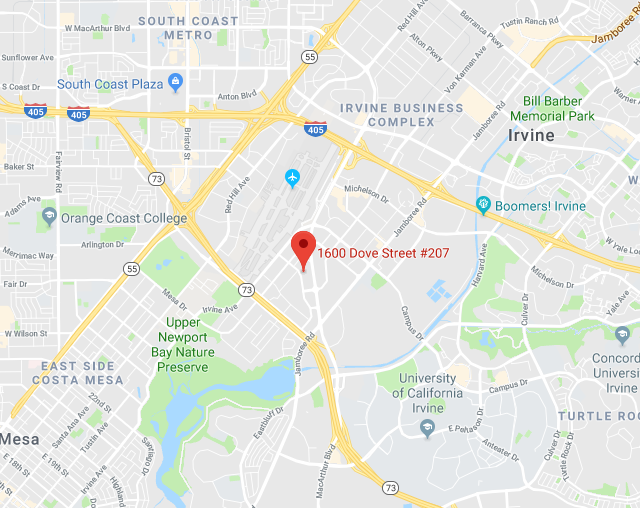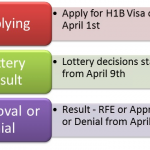PERM LABOR CERTIFICATION

The PERM program (Program Electronic Review Management) is part of the online process of the US Department of Labor for approval of alien labor certifications. The Department of Labor has online information that covers the program in general terms at: … [more...]
H1B VISA SERVICES

The H-1B visa remains in high demand due to many factors. The economy has improved and more employers are hiring workers. The demand for workers with qualifications in various specialty occupation areas has increased. Also H-1B workers can pursue legal … [more...]
Immigration Blog: Law Offices Of William B. Bennett & Associates
The EB2 Perm Objective And Reality
November 3, 2014 By William B. Bennett
Due to the retrogression of employment based visa numbers particularly after 2007 many individuals have pursued Eb2 PERM labor certification designs to jump to the front of the waiting line. This preference remains true even under the changing circumstances that are now present with the Visa Bulletin moving forward. A better understanding of the Eb2 PERM design requirements and necessity can help an individual to evaluate both their eligibility and need for this kind of residence case.
To be qualified for an Eb2 PERM design, the individual applicant must have either a qualifying master’s degree, or in the alternative a bachelor’s plus 5 years of experience related to the job offer. Qualifying degrees are required, and unaccredited programs or 3 year bachelor’s degree programs may lead some down the wrong path. The individual must have an accredited degree or foreign equivalent based upon a credible evaluation service opinion. Work experience must almost always be from a prior employer to be deemed qualifying. There may be exceptions to this simple review of the basic requirements. At the same time, if the individual has the objective of the speediest path to completion of an Eb PERM approval, taking a high risk approach with aggressive requirements could lead to long delays and even denial by US Department of Labor [USDOL] or later by USCIS of an I-140 immigrant petition.
If the individual is adequately qualified to benefit from an Eb2 PERM design then the analysis should turn to the offered PERM occupation or job offer. It is simple to understand that a job offer as a cook would not support a requirement of a master’s degree. One can view publications from the USDOL that provide guidance of the most common educational preparation for various occupations such as the Occupational Outlook Handbook. An occupation or position that generally does not support a master’s level of education could lead to challenges, delays and a USDOL denial for a requirement that is unduly restrictive to other US workers. At this stage again one must weigh the possible advantage of an Eb2 approval against increased risk of USDOL challenges or even denial of the PERM due to the advanced degree requirement.
As a condition precedent to undertaking required PERM recruitment steps, an employer must obtain approval of an ETA 9141 Application for Prevailing Wage Determination. During this initial process, the employer specifies the occupation and minimum requirements that they desire for the job offered. If USDOL is in agreement with the preliminary design a wage determination is issued or approved by the agency upon which an employer can rely. It is logical to point out at this stage that the more advanced the requirements such as the degree and/or minimum experience required the higher the wage determination will be. Employers must pay more wages for highly qualified workers to fill advanced degree occupations.
Even in PERM evaluations where the individual may have the required degree or degree with experience, and an occupation that can support the advanced degree design, the employer must also be in agreement to proceed. In working with Eb2 designs and employers the initial review of the offered wage rate becomes an important starting point. Advanced degree designs will again command higher prevailing wages for the underlying job offer. Most employers are unwilling to proceed with a PERM design where the underlying prevailing wage is substantially higher than the actual wage paid now to the individual or likely to be paid in the near future. Informed employers are unlikely to proceed with a PERM matter and design where they do not anticipate making a written “offer of employment” to an individual at a prevailing wage this is well above that now paid for the individual’s occupation. Wages are very important to employers and actions that tend to result in any movement toward significantly higher wage issues will likely be avoided by them.
When an Eb2 PERM design isn’t likely to be the right path for an individual there are still good reasons to not delay and to proceed with an Eb3 PERM design promptly. One important reason to move on with an Eb3 PERM design is that the waiting lines for Eb3 workers have been shrinking rapidly over the past year. For a discussion see the article: EB Worldwide Quota Progression of October 16, 2014. Rarely one is rewarded by delay in the US immigration context. Also, when one has an approved Eb3 PERM and I-140 petition, they keep their priority date thereafter. This means that a subsequent PERM that could support an Eb2 design or a new PERM required due to a change of employer will recapture that initial priority date. Also, having an Eb immigrant matter correctly filed or approved may be necessary for H-1B extensions beyond the 6th year in that status. Natives of India and China have unique quota issues that may justify more aggressive PERM approaches. For other immigrants, an Eb2 design may be preferable but not necessarily the best design in each case.
US Visa Reciprocity Rules
October 27, 2014 By William B. Bennett
For employment in the US some individuals will receive visas that are valid for less than the period of approval from USCIS immigration. Also, some visa applicants will have to pay additional visa fees over the normal base visa application or MRV fee. This may be due to the visa reciprocity rules provided by the US Department of State. See : Visa Reciprocity By Country – Bureau of Consular Affairs
The basis for reciprocity is to grant to applicants of US visas the same fees and validity that is offered by that applicant’s nation of citizenship to US citizens seeking visas for admission to that country. Or in other words, what goes around comes around. Reciprocity applies to both the period of validity and the final visa fee to be paid.
For this reason, Mexican citizens receive only a 12 month working visa for the basic employment visa categories of H, L, O, P and R visas. Short term visas also impact nationals of countries like Belarus where recent history has resulted in strained international relations. In most employment based petitions, USCIS grants approvals for up to 3 years. Citizens from nations impacted by shorter term visa validity must renew their visas more often to accommodate travel with the applicable loss of time and money.
Another visa of some recent interest is the limitation of 12 months validity for visitors from China. The limited validity of 12 months applies to both B-1 business and B-2 tourist visa applications. R-1 religious worker visas for China are limited to 3 months as well. These are examples of reciprocity that appear to also be impacted by political factors.
A view of the visa reciprocity rules for a specific nation can be informative. Also, the same link can be reviewed for the availability of various documents or clearances required for immigrant visa applicants. For these reasons this link is a useful tool for many visa applicants.
The Presumption Of Immigrant Intent For Nonimmigrants
October 22, 2014 By William B. Bennett
 One reason for the denial of many USA nonimmigrant visas is due to the failure of the applicant to overcome the presumption of immigrant intent. This legal presumption or legal finding can be made by a consular officer at a US consulate or embassy without evidence or proof. It is the responsibility or burden of the visa applicant to overcome this presumption.
One reason for the denial of many USA nonimmigrant visas is due to the failure of the applicant to overcome the presumption of immigrant intent. This legal presumption or legal finding can be made by a consular officer at a US consulate or embassy without evidence or proof. It is the responsibility or burden of the visa applicant to overcome this presumption.
The basis for this presumption is a provision of immigration law known as Section 214(b) INA. The law states as follows:
(b) Every alien 10/ (other than a nonimmigrant described in subparagraph (L) or (V) of section 101(a)(15), and other than a nonimmigrant described in any provision of section 101(a)(15)(H)(i) except subclause (b1) of such section) shall be presumed to be an immigrant until he establishes to the satisfaction of the consular officer, at the time of application for a visa, and the immigration officers, at the time of application for admission, that he is entitled to a nonimmigrant status under section 101(a)(15) .
This provision is a ground of inadmissibility, or in common English, a basis to refuse either a visa or admission to the USA. To understand more about how the presumption applies and who may either be exempted from the presumption or given a lower standard to overcome the presumption, a review of some of the various nonimmigrant visa categories is required.
USA law for nonimmigrant visas covers categories from A through V. Most of these visas are pure intent nonimmigrant visas. In other words the applicant must have pure nonimmigrant intent to remain eligible to receive the visa, and be admissible to enter the USA. Two very clear examples of pure nonimmigrant visas are B visitors and F students. Both B-1/B-2 and F-1 visa applicants must establish their pure intention to return to a foreign home or residence upon the completion of their stay in the USA. A good discussion of pure nonimmigrant intent and the ways that a student may go about proving their nonimmigrant intent can be found at this Boston University site: http://www.bu.edu/isso/students/prospective/immigration/j1/intent.html
Applicants for two visa categories in significant demand are exempted by the law from having to overcome the presumption of immigrant intent. These are H-1B specialty occupation workers and L-1 intracompany transferees. Not only can these visa applicants ignore the presumption, but they may also have pending immigrant visa filings and remain qualified and admissible in the H-1B and L-1 visa categories.
Other visa categories have a relaxed standard of the presumption. Historically these visas have been discussed as permitting dual intent, or a long term plan to immigrate but a present intention to obey the law and depart when and if required. Both O and P visa applicants enjoy this standard. E-1 and E-2 treaty visa applicants need only to present an unequivocal intent to depart the USA when their visa status expires to be deemed eligible for that type of visa and admissible. The US Foreign Affairs Manual confirms this longstanding policy. There is no requirement for E-1/E-2 treaty visa applicants to have a foreign residence that they do not plan to abandon.
TN applicants under NAFTA do not enjoy the same clarity of their intentions. The US Foreign Affairs Manual provides some helpful guidance as follows:
The circumstances surrounding an application should reasonably and convincingly indicate that the alien’s temporary work assignment in the United States will end predictably and that the alien will depart upon completion of the assignment. An intent to immigrate in the future which is in no way connected to the proposed immediate trip need not in itself result in a finding that the immediate trip is not temporary. An extended stay, even in terms of years, may be temporary, as long as there is no immediate intent to immigrate.
Some guidance on this policy has indicates that the filing of an immigrant matter with the applicable US agency may not suffice to establish immigrant intent of a TN worker standing alone. On the other hand the approval of an immigrant petition may be sufficient to establish immigrant intent. Once again, the presumption of immigrant intent falls into an unclear area at this point. A Mexican national seeking a TN visa at a US consulate in Mexico may find this policy to be much harsher than a Canadian national seeking entry without a visa at a US customs inspection location in Canada. The nationality of the applicant plays a role in 214(b) determinations, meaning that nations that have a high visa refusal rate and domestic circumstances that likely promote the departure of their citizens to emigrate to other nations will have higher standards to overcome the presumption.
US consular officers have a large amount of discretion over 214(b) decisions. They can ignore an approved immigrant petition for someone that may be in an immigrant quota or waiting line that is many years long. Again the US Foreign Affairs Manual provides some guidance for making exceptions on individual cases that clearly indicate long term immigrant intentions. Likewise the kind of proof to overcome the presumption of immigrant intent is very low for nations that have low visa refusal rates and low numbers of visa violations. For example, citizens of Visa Waiver or ESTA nations may not be required to present proof or a statement of pure nonimmigrant intent to secure visas when needed. Citizens of nations with current difficult circumstances and with low visa approval rates will have high standards to overcome the presumption.
For the great majority of nonimmigrants, understanding the presumption of immigrant intent and how this can impact either visa applications or their admission by US Customs is important. Having a clear present intention, and in many cases supporting documentation to establish clear reasons to depart from the USA at the completion of a nonimmigrant stay can avoid denials of visas or refusal of admission.
EB Worldwide Quota Progression
October 16, 2014 By William B. Bennett
 Just like fiscal year (FY) 2014, we are seeing rapid movement forward on the Eb3 (Employment based) queue for the worldwide Eb3 quota early in FY 2015. For most individuals now with priority dates, pending and approved PERMS, and I-140 petitions, this is certainly good news. It is also reason for some individuals to stop waiting for the right time to start their residence process. The time to get started is now. Rarely is one rewarded in the US immigration process by delay.
Just like fiscal year (FY) 2014, we are seeing rapid movement forward on the Eb3 (Employment based) queue for the worldwide Eb3 quota early in FY 2015. For most individuals now with priority dates, pending and approved PERMS, and I-140 petitions, this is certainly good news. It is also reason for some individuals to stop waiting for the right time to start their residence process. The time to get started is now. Rarely is one rewarded in the US immigration process by delay.
The Visa Bulletin is published each month by the US Department of State and provides for guidance on which immigrant petitions can proceed to the final immigrant process either at a US consular office abroad or by adjustment of status within the USA. One way to view the priority dates on the Visa Bulletin is to envision a waiting line or queue. The date if the Visa Bulletin is the day when the first person waiting in line to be served with their final immigrant process arrived in line. Anyone with a date later than the person at the front of the line is behind them in queue. The longer one is behind that person with a current priority date at the front of the line, the longer your wait may be.
The November 2014 Visa Bulletin provided the following guidance regarding the Eb3 progression:
Worldwide: Continued rapid forward movement for the next several months. After such rapid advance of the cut-off date applicant demand for number use, particularly for adjustment of status cases, is expected to increase significantly. Once such demand begins to materialize at a greater rate it will impact this cut-off date situation.
One can expect that the cutoff date will soon return to the 2014 advance of October 1, 2012. Additional advances into 2013 and beyond are then possible given the above guidance. In support of this, the statistics from the US Department of Labor indicate that the number of PERM cases certified has not returned to the level of FY 2007. For FY 2013 and FY 2014 the total number of applications certified were 35,188 and 57,459 respectively.
Calculations that would point to definite advance movement of the Eb3 queue remain speculative. The number of included family members alone that will be added to the usage of the quota remains an unknown variable unless the rules are changed to count only the principal employment based applicant.
One can speculate that with 140,000 Eb visa numbers available each year that usage for Eb1, Eb2 and Eb3 in the worldwide quota would appear to be below the full annual allocation by a trend permitting further movement like we have seen over the past several fiscal years.
While there are various reasons for this movement, the one most apparent reason would be the lingering effects of the Great Recession. Both job loss and lower job creation have an impact on the Eb queue. Demand for visas fall with fewer Eb immigrant petitions being filed and cases in queue failing to move to fruition due to factors including job loss and business closures. One could say that a benefit of a recession is improvement of the waiting lines for employment based immigrants.
One exception to this rule appears to be for natives of India. Once again, a review of the published statistics from the US Department of Labor show heavy PERM filings and approvals for natives of India, over 50% of the approved PERM cases over the last 3 fiscal years. These facts do not favor significant advance movement for the individuals now in queue. Heavy demand results in longer lines, and the trend for EB natives of India appears to be well engrained in the system.









